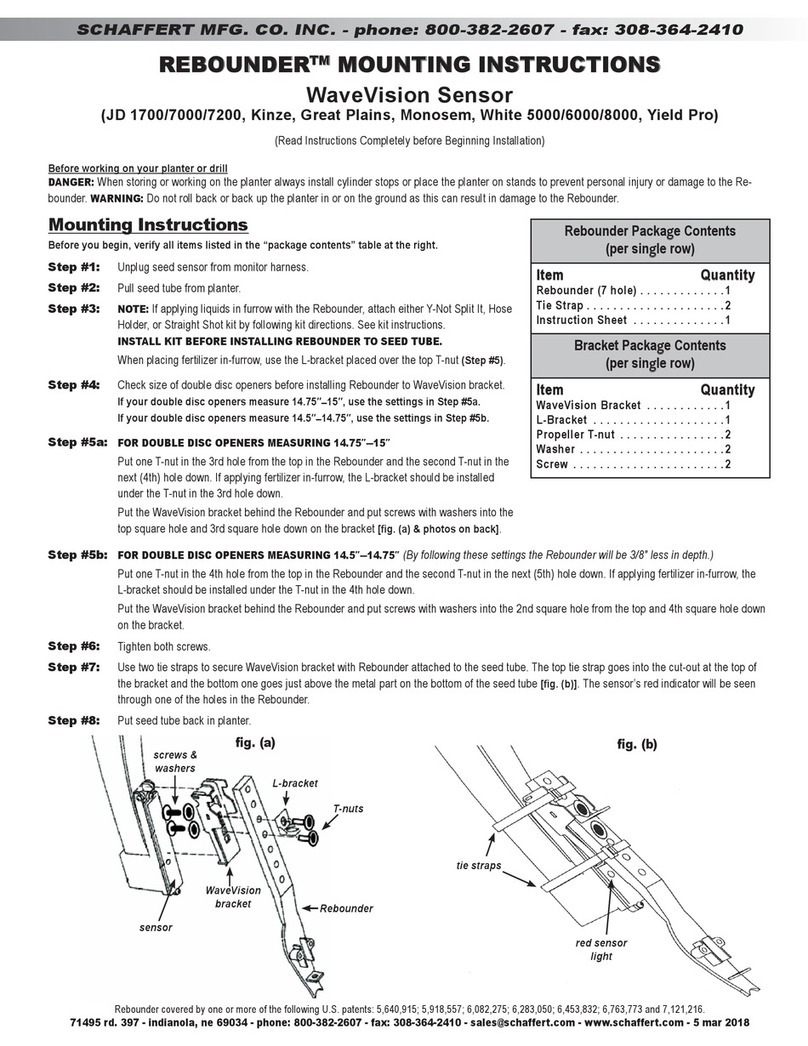
3
CLEARSPAN™END PANEL INSTALLATION
Revision date: 04.10.08
UNPACK AND IDENTIFY PARTS
The following steps will ensure that you have all the
necessary parts before you begin.
Unpack the contents of the shipment and place where
you can easily inventory the parts. Refer to the Bill of
Materials/Spec Sheets.
Verify that all parts listed on the Bill of Materials/Spec
Sheets are present. If anything is missing or you have
questions, consult diagrams for clarification or contact
customer service.
NOTE: At this time, you do not need to open the plastic
bags containing smaller parts such as fasteners and
clamps (if present).
1.
2.
END FRAME: Final Check
Before you attach the end panel, inspect the end frame for
sharp edges or fasteners that could damage the panel.
Verify that all end frame members are properly
secured.
Verify that all bolts and clamps are tight.
Recheck the end frame assembly for sharp edges or
clamps and bolts that may interfere with the installation
of the end panel. File or tape sharp edges as needed.
Reposition clamps and bolts as needed and tape all
rafter pipe joints with duct tape to protect the panel.
Verify that the main building frame is properly and
adequately anchored.
DO NOT ATTACH AN END PANEL TO AN
UNANCHORED FRAME.
Remove the ratchets that secure the bonnet portion of
the main cover at each end of the original shelter. (This
step may not apply to all applications.) See Page 8 for
additional ratchet information.
Continue by attaching the end panel.
1.
2.
3.
4.
5.
6.
7.
Custom End Panels
The procedures presented in this guide describe attaching
a typical end panel to a typical end frame of a ClearSpan™
building. If you are attaching a custom panel or a typical
panel to an end frame that differs from what is shown,
some steps may not apply.
It is the responsibility of the owner/contractor to review the
steps in this guide and to adapt the procedures as needed
to account for differences.
If you have questions, consult the services of a qualified,
professional contractor familiar with the installation of
similar covers and panels.
Installation Kit Components and Typical End Panels
The design and size of the end panel determines which
components are included in each installation kit. For the
purpose of this installation guide, the following conditions
apply:
End panels (20', 26', and some 30' wide) are secured
to the end rafter and end frame using Tek screws,
washers, and fabric clips. These are the components
typically included with the installation kits for these end
panels. No 1" strapping or pipe are included.
EXCEPTION: In some instances for a 30' wide end
panel, PVC or metal conduit pipe or both are included
in the kit in addition to ratchets and 1" strapping.
Consult Panel A and Panel B on Page 5 to view typical
end panel designs.
End panels that are 30' wide or wider typically include
D-rings along the upper radius and are secured to the
end rafter using 1" strap. Tek screws, washers, PVC
and metal conduit, and additional 1" strap are included.
No fabric clips are included.
EXCEPTION: In some instances, a 30' wide panel may
be designed without D-rings. In those cases, fabric
clips are included with the kit for that panel.
Consult Panel B and Panel C on Pages 5-6 to view
typical end panel designs.
For end panel widths not indicated above and for
customer end panels, the installation kits may include
a combination of all components mentioned above to
adequately secure the panel to the end frame.
This guide does not address the installation of custom
end panels or the installation of a typical end panel on
an atypical building frame or end frame. The customer
can, however, review the information and steps
presented in this guide to determine the best and safest
way to attach an end panel of a similar design.
Always consult the services of a qualied and
experienced contractor if you are not familiar with the
installation of similar covers panels.
•
•
•
•




























